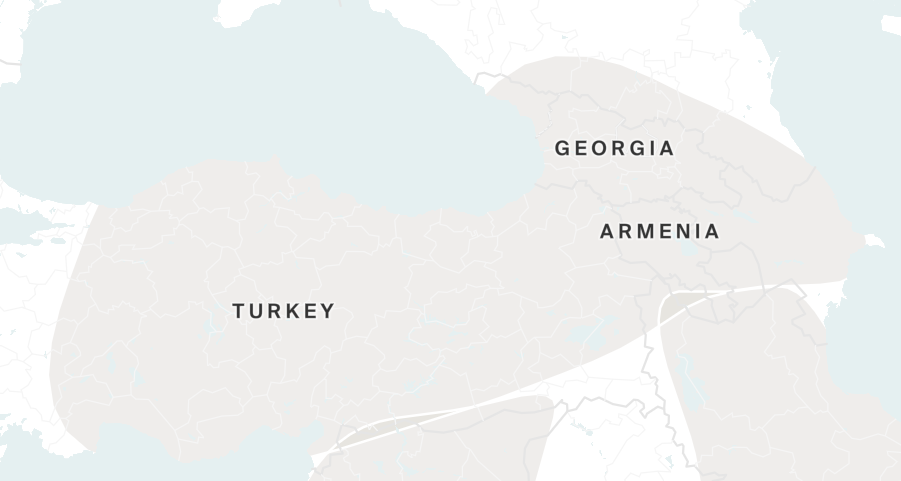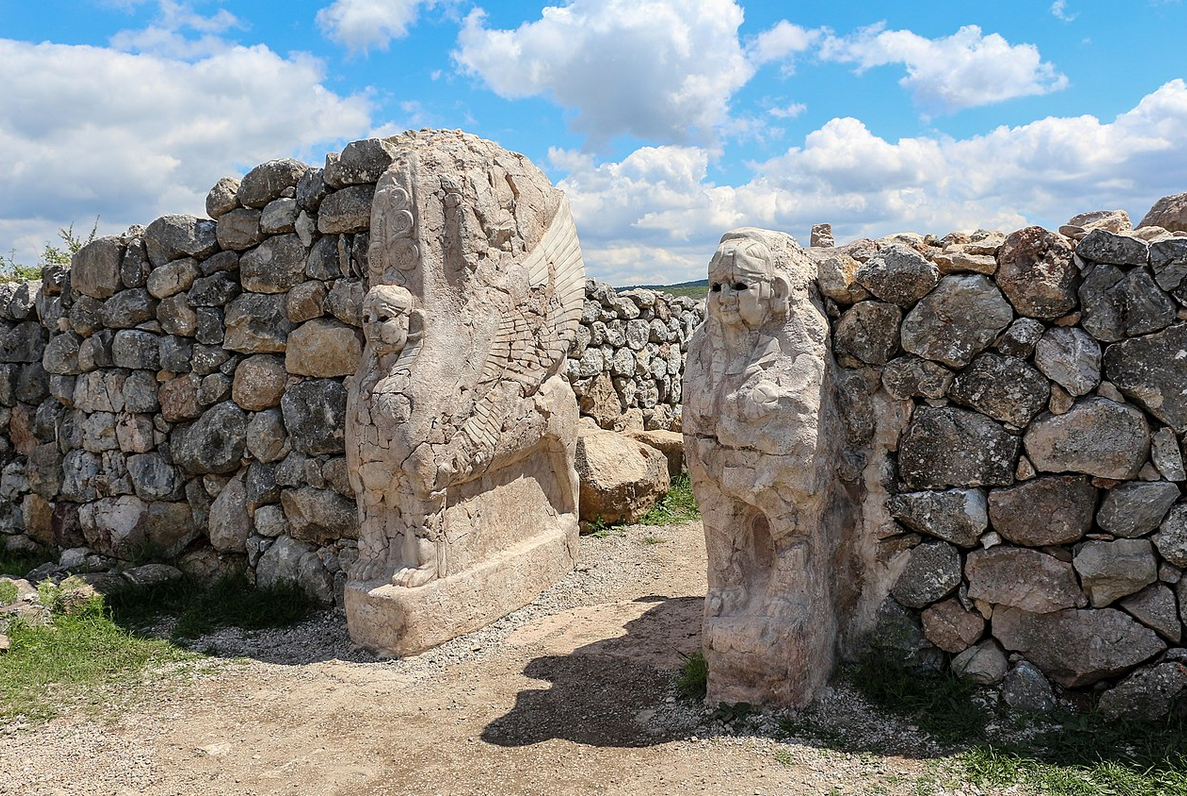What is Anatolia & the Caucasus DNA Ethnicity on Ancestry?
The results of our AncestryDNA tests may sometimes be what we expect or on occasion may be a big surprise. Either way, often we need a little more information regarding some of the regions that arise in our ethnicity estimates.

One region that is not at all uncommon is the Anatolia & the Caucasus DNA region. Those who still live in this region already understand all about its history and culture. There are others, however, who may never have even visited or in fact been aware that they have ancestors from that area.
In this post we will go into more detail with regards to the history, geography and culture of the Anatolia & the Caucasus region. We will also discuss what it means to be from this region and how easy or difficult it might be to trace our roots in the Anatolia & the Caucasus Region.
What Is the Anatolia & the Caucasus DNA Region?
The West Asian DNA region of Anatolia and Caucasus covers a large area and several countries. This range includes:
- Turkey
- Georgia
- Armenia
- Azerbaijan
To a lesser degree this DNA region also extends into the border regions of:
- Syria
- Iran
- Russia

Anatolia & the Caucasus DNA Region Subregions
There is only one subregion to this DNA region and this is known as Eastern Anatolia. It includes most of Turkey as well as some of western Armenia and northern Syria.
Turkey History
Central to the Anatolian peninsula the country of Turkey is one of the oldest permanently settled regions on the planet. There has been a humanoid presence in Anatolia for hundreds of thousands of years. This region likely saw early hominids such as Homo Erectus who had migrated from the southwest having originated on the continent of Africa.
The general culture of the region would be described as Indo-European with the European part of Turkey seeing human habitation for at least 40,000 years. Agriculture would develop in the region from Middle Eastern influences turning the hunter-gatherers of the Anatolia region into farmers roughly 9,000 years ago.
Earliest Recorded Inhabitants
Within the region we call Turkey today the earliest recorded inhabitants were the Hattians and the Hurrians. These were Bronze Age peoples who lived in the region as early as 2,300 BC. A few centuries later the Hittites, an Indo-European group, would move into the same lands and essentially absorb the Hattians and Hurrians into their own society.

The Hittites
The Hittites would develop an empire in the region during the 18th – 13th centuries BC. During this time however the Assyrians managed to capture some territory in southeast Turkey having expanded their own empire beyond the borders of the region we call today Iraq.
The Hittites empire lasted until around 1180 BC at which point they were replaced by the Phrygians. These new peoples who arose in the central west region of Turkey were Indo-Europeans who would dominate in the region until 695 BC. At this point they themselves were replaced by the Cimmerians.
Foreign Influences
The region of modern-day Turkey has seen a great deal of history especially with regards to being under the control of historical empires. Alexander the Great extended his empire into the region as did the Persians, Romans, Byzantines and the Ottomans.
With a combination of influences from Europe to the west and Asia to the east Turkey became a hugely unique region ethnically speaking. Its DNA is rooted deeply and connects to some of the earliest peoples to leave Africa.
Georgia and Armenia
Georgia and Armenia as extensions of the Anatolia region have a very similar history to Turkey with many of the same empires exerting influence. In Armenia however some influences from further to the east also came into play. The Mongol empire for example conquered most of Armenia leaving the way open from the east for various other Central Asian Tribes to invade during the 13th through 15th centuries AD.
The Caucasus Region
The Caucasus region incorporates the regions of Georgia, Armenia, Azerbaijan and southern Russia. Fossil remains in the region indicate hominid presence dating back almost 2 million years. One of the earliest cultures was known as Kura–Araxes and thrived from around 4000 BC until 2000 BC. They enveloped a vast area which mostly encompassed the modern-day territories of the Southern Caucasus, northwestern Iran, the northeastern Caucasus, eastern Turkey, and Syria.

Under the rule of Ashurbanipal, the boundaries of the great Assyrian Empire reached as far as the Caucasus Mountains. This would be followed by later ancient kingdoms such as Armenia, Albania, Colchis and Iberia. All of these kingdoms would later be incorporated into various Iranian empires, hich would rule the region for centuries.
How Did You Get Anatolia & the Caucasus Region DNA?
If you already know that you had family who came from Anatolia & the Caucasus or any of the bordering states then you know why you have Anatolia & the Caucasus region DNA. If this result came as a surprise you may not know how exactly you came by DNA from this region.
If you have a sizable percentage of DNA from this region then it is likely you have an ancestor who was born in or close to the country of Anatolia & the Caucasus.
Is the Result Accurate?
When it comes to ethnicity estimates the higher the percentage you have from a certain region the more likely it is to be accurate. If your percentage is low, however, then it is harder to pinpoint exactly where your most recent ancestors came from.
A low result could mean a distant ancestor from that region. It is best to focus on your highest rated region's matches to determine where your ancestors came from more recently. A low percentage can often be hard to locate because the ancestor in question could be many generations back in your tree.
How to Research my Ancestry from These Regions
The results of a DNA ethnicity test are of course a great place to start especially if there is an unexpected result found in the report. As always of course the DNA cannot tell the whole story and we need to actually do the research work.
A percentage on an ethnicity estimate means very little unless you follow through and start building up your family tree. The relevant ancestors may be several generations back and it may take a lot of research to discover who they were.

If you have specific regions mentioned in your report then you have a good idea of where your ancestor may have originated from. Ancestry DNA even has migratory information from some of these regions through to the final settlement places in the United States or elsewhere in the world.
Using Ancestry you may be able to determine not only who your ancestors were but where they are from in the region and perhaps the reason they decided to move.
Final Thoughts
The Anatolia & the Caucasus DNA region covers a vast area in Western Asia and is viewed by many historians as one of the first areas settled by early hominids upon leaving Africa. This means that the DNA of the region has links that are closer to the first humans to walk the earth.
It was a region of fertility which led to some of the earliest farming and it helped to found some of the most prosperous empires in history.
Link To or Reference This Page
We spent a lot of time downloading, cleaning, merging, and formatting the data that is shown on the site.
If you found the data or information on this page useful in your research, please use the tool below to properly cite or reference Name Census as the source. We appreciate your support!
-
<a href="https://namecensus.com/blog/what-is-anatolia-the-caucasus-dna-ethnicity-on-ancestry/">What is Anatolia & the Caucasus DNA Ethnicity on Ancestry?</a>
-
"What is Anatolia & the Caucasus DNA Ethnicity on Ancestry?". NameCensus.com. Accessed on May 7, 2024. https://namecensus.com/blog/what-is-anatolia-the-caucasus-dna-ethnicity-on-ancestry/.
-
"What is Anatolia & the Caucasus DNA Ethnicity on Ancestry?". NameCensus.com, https://namecensus.com/blog/what-is-anatolia-the-caucasus-dna-ethnicity-on-ancestry/. Accessed 7 May, 2024
-
What is Anatolia & the Caucasus DNA Ethnicity on Ancestry?. NameCensus.com. Retrieved from https://namecensus.com/blog/what-is-anatolia-the-caucasus-dna-ethnicity-on-ancestry/.
